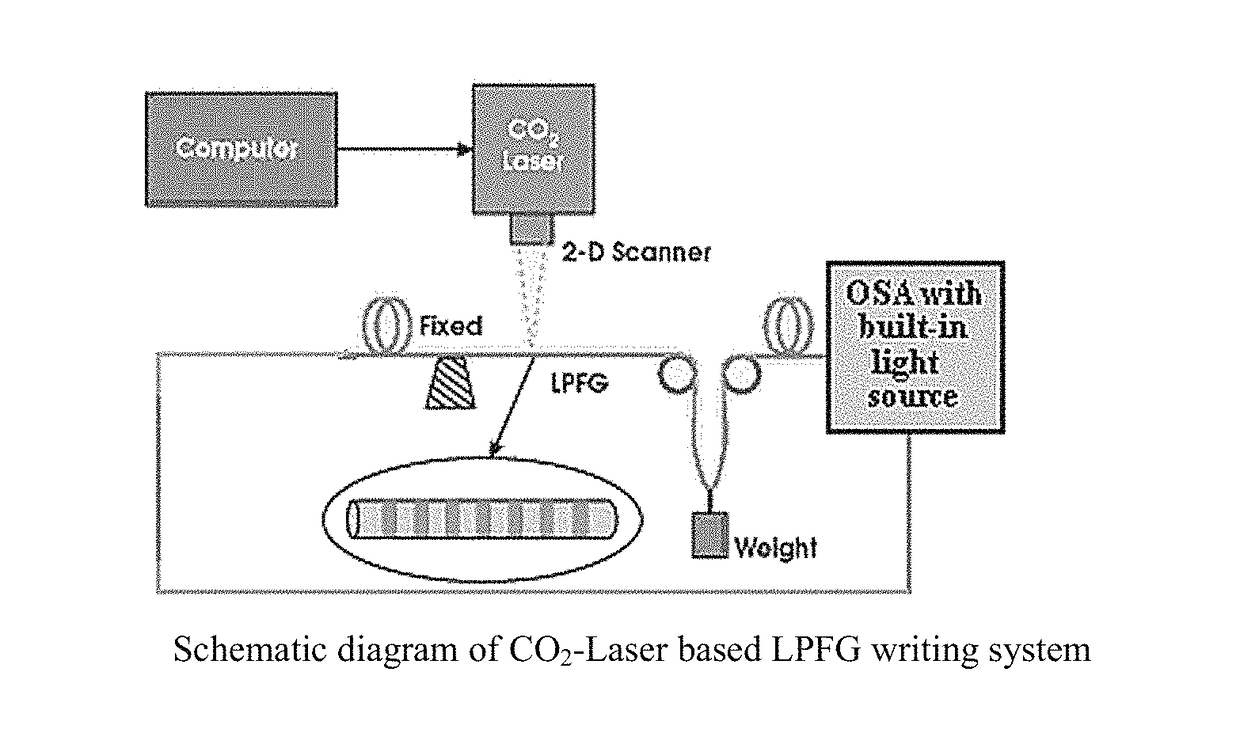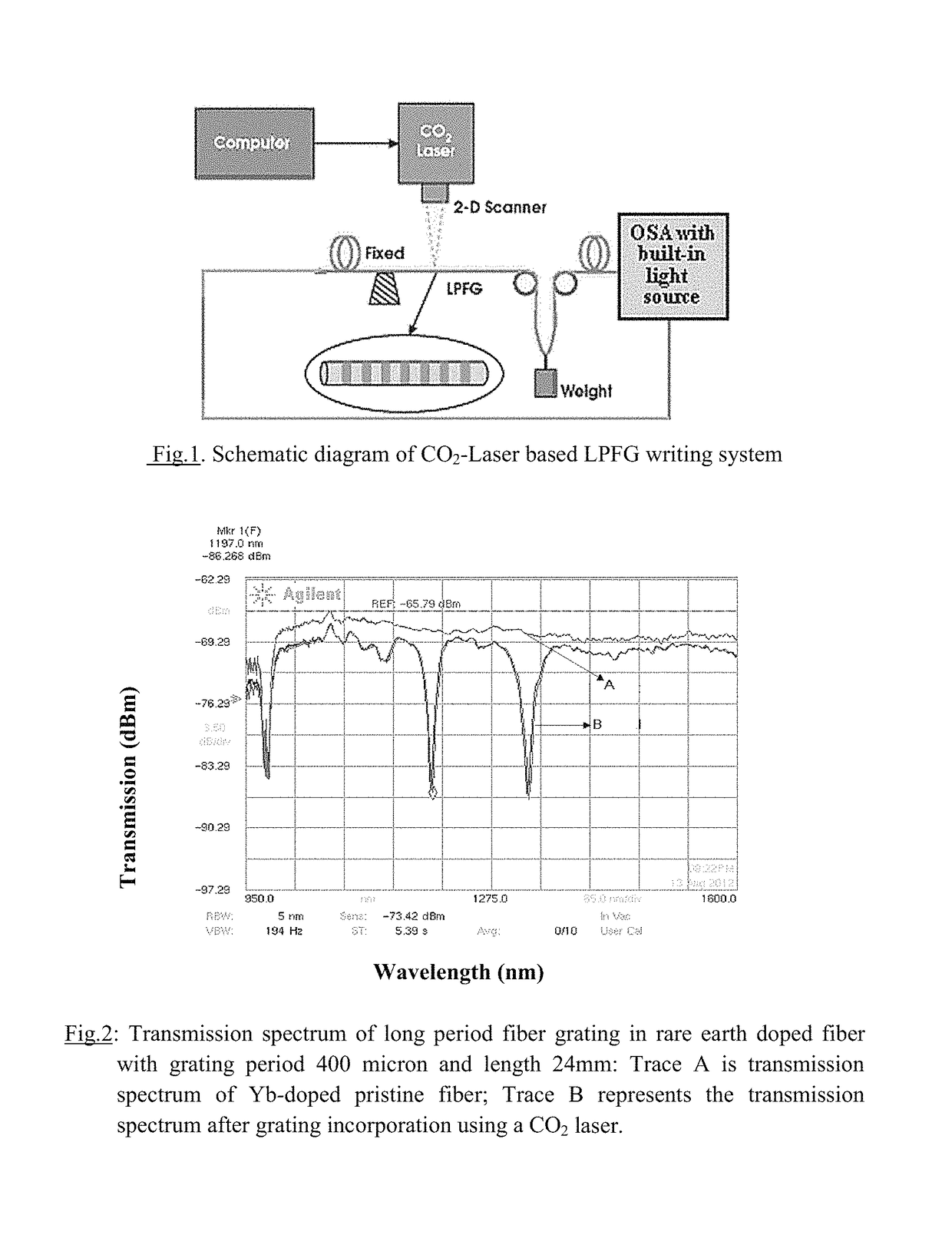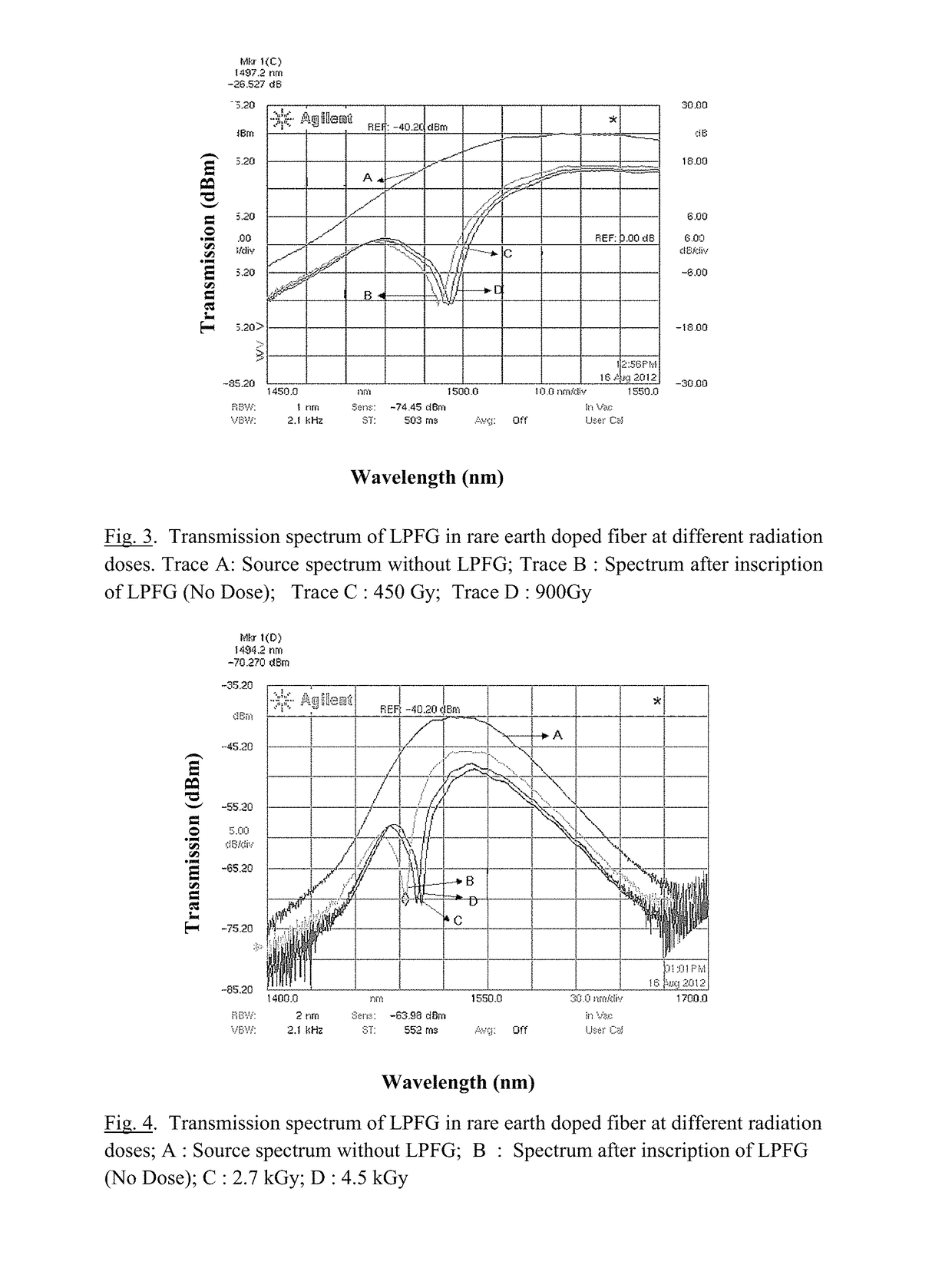Optical rare-earth doped fiber long period grating based ionizing radiation dose sensor device
a technology of ionizing radiation dose and optical rare earth doped fiber, which is applied in the field of fiber optic sensors, can solve the problems of critical limitations on their usage, limiting its application at site, and not being viable in commer
- Summary
- Abstract
- Description
- Claims
- Application Information
AI Technical Summary
Benefits of technology
Problems solved by technology
Method used
Image
Examples
Embodiment Construction
[0029]Long period fiber gratings (LPFGs) that satisfy the phase matching condition between fundamental core mode and a set of forward propagating cladding modes in an optical fiber are of interest for making devices in the field of optical fiber sensors. As a precursor to practical device design, ease of fabrication, low cost, high sensitivity and reduced cross sensitivity are important considerations.
[0030]It is well known that resonance wavelength λ of a LPFG with period A is determined by phase matching condition.
λ=[ncoreeff−nclad,neff]Λ (1)
[0031]where ncoreeff, nclad,meff are effective indices of fundamental core mode and the mth cladding mode, respectively. Most LPFGs in the past have been fabricated using UV based point-by-point writing method. The UV based method requires expensive laser system, post annealing and there are issues of thermal stability and hydrogen handling of such gratings.
[0032]The fabrication system proposed in this invention, which is based on two dimensi...
PUM
 Login to View More
Login to View More Abstract
Description
Claims
Application Information
 Login to View More
Login to View More - R&D
- Intellectual Property
- Life Sciences
- Materials
- Tech Scout
- Unparalleled Data Quality
- Higher Quality Content
- 60% Fewer Hallucinations
Browse by: Latest US Patents, China's latest patents, Technical Efficacy Thesaurus, Application Domain, Technology Topic, Popular Technical Reports.
© 2025 PatSnap. All rights reserved.Legal|Privacy policy|Modern Slavery Act Transparency Statement|Sitemap|About US| Contact US: help@patsnap.com



